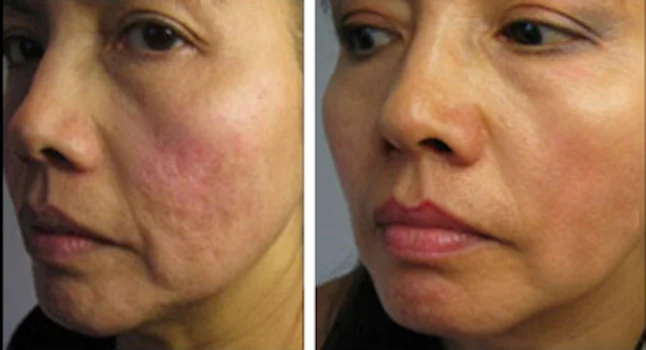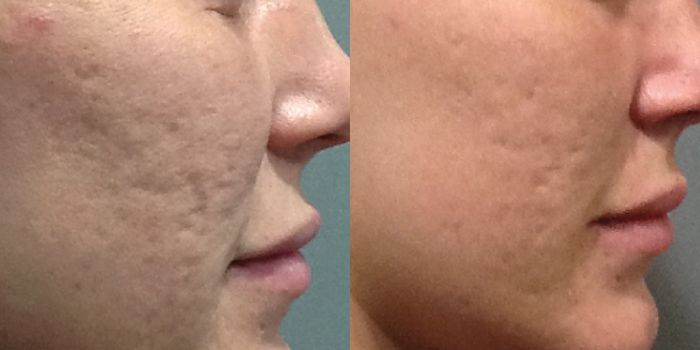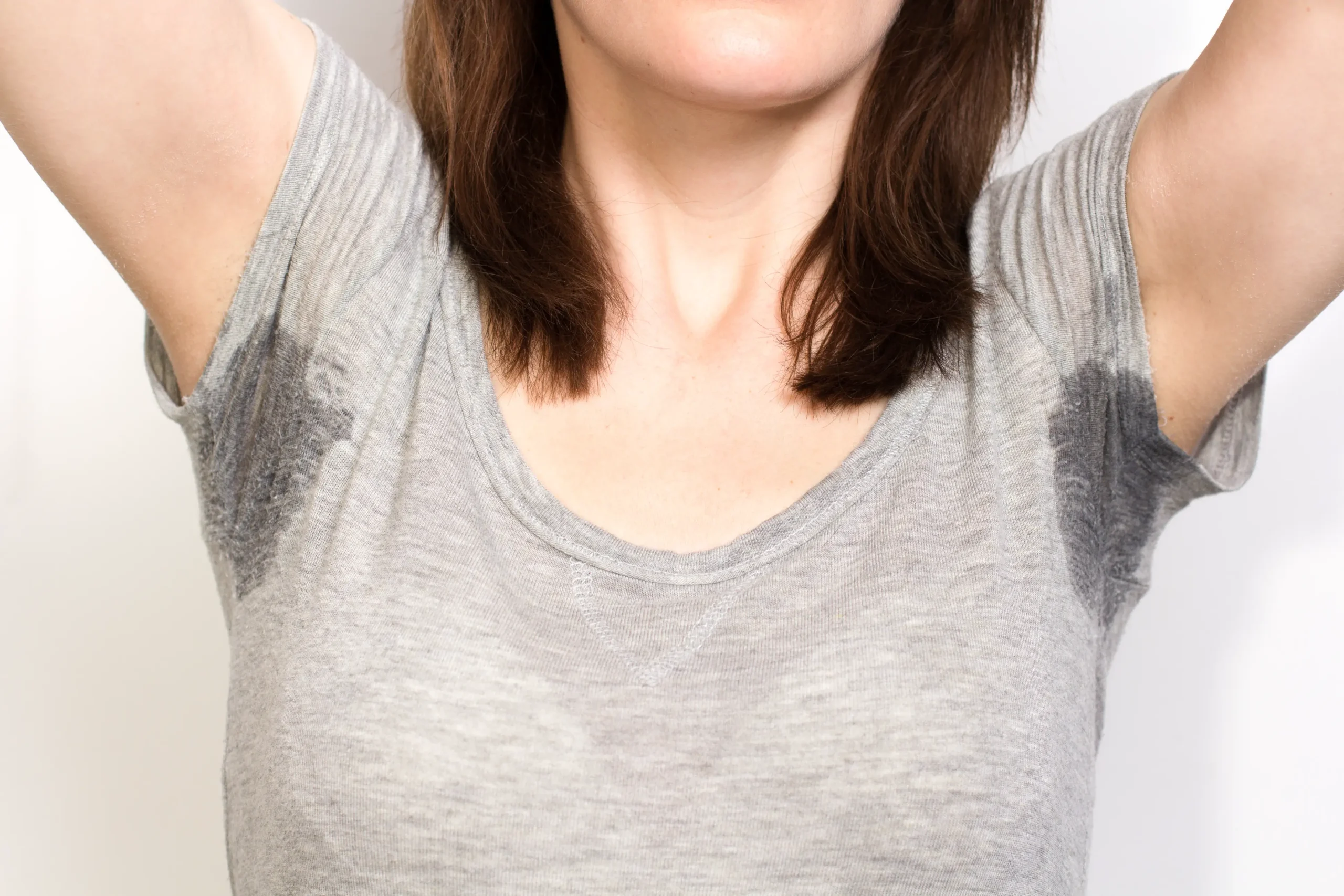We asked two beauty experts to weigh in on the effectiveness of microneedling for the treatment of acne scars. Here’s their advice.
Every year, 50 million Americans suffer from acne. For many, the most common skin condition in the country clears up over time. However, others are left with a lasting reminder of the predominantly teen skin disease in the form of acne scars.
There are many solutions available to help on the journey to overcoming acne scars, from the classic dermabrasion to the modern plasma skin resurfacing. Although it is not yet a household name, interest in microneedling has been on the rise for years.
Your first treatment: what to expect
The treatment uses a simple technique to cause a complex biological response, resulting in an effective solution for people living with acne scars.
“Microneedling uses tiny needles to create micro injuries deep in the skin to promote collagen production and regeneration,” says Holly Henningson, lead esthetician at ATMA Beauty Medspa in Miami, Florida. “This regeneration of collagen gives the procedure it’s more common name: “collagen induction therapy (CIT).”
Roughly an hour prior to the treatment, a numbing cream is applied to the skin to help ease any potential discomfort. Using a small tool, a professional then moves over the impacted area while piercing the skin.
The healing that follows results in the formation of new blood vessels, causing better blood flow to the treated region. This also stimulates the regeneration of connective tissues in the skin, smoothing out the area, and offering a healthier overall appearance.
The length of the procedure depends on the size of the surface treated. For small patches of skin, a single session can take only 10 minutes, while large scars can take up to an hour and a half. A minimum of three sessions, separated by four to six weeks of recovery time, are required for proper results.
The tools of the trade
The exact tools used for microneedling vary, as there are multiple treatment options.
Radio frequency microneedling machines automatically puncture small portions of skin with several needles in 0.1 second bursts. The professional places the radio frequency microneedling tool over a small portion of the area, activates it manually, then moves the tool to the next part of the skin to be treated. This device allows measured and precise piercing between 0.5 and 3.5 millimetres into the skin.
Skin pens are an automatic tool that contain a dozen small needles. Unlike radiofrequency micro needling, skin pens do not need to be manually activated, as the needles constantly move up and down. The pen-like tool moves smoothly over the skin while in motion.
The manual rolling device (also known as the Dermaroller) is a metal cylinder covered in spikes and attached to a short handle. Resembling a rolling pin, it’s rolled over the treated surface, puncturing as it turns.
Another manual microneedling technique is the stamping device. This tool is a simple rectangle with spikes protruding from one side and attached to a short handle. While rolling devices are ideal for covering large areas, stamping devices offer greater precision. Stamping devices can also treat areas covered by hair, something other tools struggle with.
» Learn more about at home microneedling devices and how you can have success on your own
The healing process: recovery and results
In a study published in the Journal of Cutaneous and Aesthetic Surgery, 37 patients were provided with microneedling treatment. 36 out of the 37 patients said they achieved a reduction in their scarring, with 80% of the participants rating their microneedling results as ‘excellent.’
Recovery time varies depending on the depth and area treated, but within a few days most patients are fully healed. “There will be minor pinpoint bleeding which leaves patients very red the day of the procedure, plus the area remains pink and dry for a few days following,” says Diane Muzik, esthetician at Minars Dermatology in Hollywood, Florida. “So we advise patients to apply Aquaphor (skin ointment) a few times a day to keep their skin hydrated and protected.”
While microneedling is virtually a “no down time” procedure, a handful of restrictions do apply following treatment. “Refraining from exercise is recommended, as well as avoiding the sun and makeup for at least three days,” informs Muzik.
The simplicity of the procedure means that that there are essentially no risks to microneedling. “Most of the risk will come with improper post-care,” says Henningson, “but so long as the guidelines are followed, it’s a very safe procedure.”
After completing microneedling sessions, the results are considered to be permanent. Newly formed collagen smooths the skin and removes traces of acne scarring.
That being said, a certain level of maintenance is required over time. “Our bodies break down collagen, both new and old, throughout the aging process,” says Muzik.
While recommendations for long-term maintenance vary, many experts suggest semi-regular treatments. “I always recommend treatment every four to six months to encourage healthy collagen,” says Henningson.
Before and After Pictures



Alternatives to microneedling
Microneedling’s main strength is re-texturizing damaged skin for a smoother appearance. Other treatments compliment this procedure by eliminating the discoloration caused by acne scars.
“Often we will combine microneedling with a chemical peel,” says Henningson, “in which case flaking may occur for up to 5 days.”
Platelet-rich plasma (PRP) treatment can also be used to supplement microneedling, even on active acne. This procedure involves extracting a vial of the patient’s own blood and spinning it in a centrifuge. This separates the liquid plasma in the blood from its solid components, primarily platelets, as well as red and white blood cells.
Platelets are the part of blood that causes clotting, and they are also essential to the healing process. Following a spin on the centrifuge, blood that is five to ten times richer in platelets than average blood is injected at the treated site. Combining PRP treatment and microneedling offers the best outcome available in most cases.
While several treatment options exist for handling acne scars for people of all skin tones, microneedling is a particularly effective option for people with darker skin tones. Laser treatments are more common when treating Caucasian people with acne scars. They can cause darker skin to lose or gain pigment, creating a discoloration. Microneedling doesn’t use any heat or lasers, making it a safe alternative to other types of treatment.
Beyond acne scars, microneedling offers a range of applications. Microneedling’s many cosmetic uses span nearly every common dermatological issue. “We can treat stretch marks, melasma, sun damage, overall skin aging, fine lines, and wrinkles,” says Henningson. The procedure can also help treat pigmentation issues, and decrease pore size.
Takeaway
Given microneedling can appear rather straightforward, particularly when using manual tools, many people are tempted to try and perform the procedure at home. While at home microneedling might be an option for some, trained and experienced professionals offer a proven track record of results. When done in a clinical environment, the risks of infection are significantly lower.
Nevertheless, the required qualifications for performing microneedling vary by state. Certain states, such as California, require a permanent cosmetics license or medical degree to perform the procedure, while other states require no licensing at all.
As with all procedures, it is important to find reputable practitioners to assure the best, safest results.









